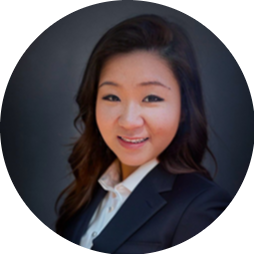Across the World of Medicine: Perspectives of an International Medical Graduate


Growing up in Myanmar, raised by physician parents, I saw health care as not just a profession but a way of life. I became acquainted with the realities of illness and mortality at the age of 5 when I witnessed my grandmother's battle with stage 4 lung cancer. Her oncologist's unwavering support left an impression on me that planted the seed of interest in medicine.
My journey in medicine began in Myanmar, a country with unique challenges. I embarked on a seven-year medical program after high school. Learning medicine sometimes meant taking pictures of handwritten notes from an overhead projector. Being in the first few rows of the class was crucial to getting clear views of lecture materials. During medical school, when I was first introduced to hematopoiesis, I found myself getting to class early to sit in the front row. I was especially fascinated by the way different types of blood cells work together in harmony like a perfectly organized orchestra. This fueled an interest in hematology during my early years of medical training, setting the stage for my future career path.
The prospect of receiving cutting-edge medical training in the U.S. came to me through a diversity visa lottery in my final year of medical school. However, the transition to a new country posed its own set of challenges, from adapting to the new culture to acclimating to the nuances of the American health care system. As an international medical graduate (IMG), I found that my first challenge was spoken English. Securing a residency spot in the U.S. can be tough when strong recommendation letters are needed, and your contacts are limited. I adapted by volunteering at clinics and doing lab research. I reached out to established Burmese-American doctors who guided me and connected me to people who would become my mentors. They inspired me to pay this mentorship forward to IMGs who are in the same position that I was. After matching into internal medicine residency in 2018, I remained active with the Burmese medical society, providing guidance to medical graduates on their career pursuits and conducting mock interviews for residency applications. I learned that mentorship can even be established via email, social media, or mutual acquaintances; we just need to reach out.
When I returned to Myanmar during my first year of residency, I shadowed a renowned hematologist who solidified my passion for hematology. My experience there deepened my understanding of the disparities that exist within every country. In Myanmar, health care costs are low compared to the U.S. (a CT scan may cost around $4 in a public hospital), but poverty often limits patients’ access to medical care, especially in rural areas. Physicians’ dedication to providing the best care despite limited resources is admirable; collaborative efforts are essential to addressing health care gaps across the world. Within the U.S., diverse patient populations experience different challenges related to such issues as language barriers, medical literacy, and health insurance, all of which can lead to health care disparities. Experiences across the world have given me unique perspectives on such disparities, which have become a growing interest of mine.
From Myanmar to the U.S., my journey in medicine has been guided by a sense of duty to the communities I serve. As I continue to navigate the world of hematology and oncology, I want to leverage my experiences to provide equitable care to patients, both locally and globally. I hope that my journey can one day inspire others to join me in helping international physicians and patients with the greatest needs.
Dr. Naing indicated no relevant conflicts of interest.
Acknowledgment: This article was edited by Drs. Jessica Stempel and Sanjay Mohan.